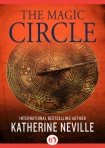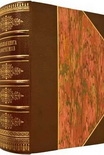The Magic Circle Katherine Neville (top 100 novels of all time TXT) 📖

- Author: Katherine Neville
Book online «The Magic Circle Katherine Neville (top 100 novels of all time TXT) 📖». Author Katherine Neville
I was so bloody confused: I had a million questions that were still unanswered. But Wolfgang took me into his arms there beside the river and he tenderly kissed my hair. Then he held me away and regarded me with a serious expression.
“I will tell you the answer to everything you’ve asked—that is, if I know the answers,” he said. “But it’s after two in the morning, and though we don’t meet Zoe until eleven tomorrow, I must confess I’d like to spend at least some of tonight making up for all the unhappiness it seems I’ve caused you.” He smiled wryly and added, “Not to say what it’s cost me, to spend all those nights alone in that Russian barracks!”
We headed along the quai where the fuzzy new leaves draped on the chestnuts, illuminated by little lights from below, were like gauzy shrouds of dangling caterpillars. The air was laden with the moisture of spring. I felt as if I were drowning and I knew I had to snap out of it.
“Why don’t you start with Russia?” I suggested.
“First of all,” Wolfgang began, taking my hand once more, “perhaps you found it odd, as I did, that during our entire stay in the Soviet Union—and despite our extensive discussion on the topic of security and cleanup of nuclear waste—not a single mention was made of the ‘accident’ at Kyshtym?”
In the 1957 disaster at Kyshtym, a nuclear waste dump had gone critical, like a live reactor minus control rods, and spewed waste over an estimated four hundred square miles—roughly the size of Manhattan, Jersey City, Brooklyn, Yonkers, the Bronx, and Queens—an area possessing a population of around 150,000.
The Soviets had successfully covered up this “mistake” for nearly twenty years, despite the fact that they’d had to clear population from the region, divert a river around it, and shut down all roads. It wasn’t until an expatriate Soviet scientist in the 1970s had blown the whistle that it all came out. But with today’s new atmosphere of cooperative atomic glasnost, one did have to wonder why, when they’d made a clean breast of everything else, Kyshtym was never broached throughout our week of intensive dialogue. It suddenly occurred to me that Wolfgang had an important point.
“You mean, you believe that the Kyshtym ‘accident’ was really no accident?” I asked.
Wolfgang stopped and smiled down at me in the almost surrealistic night light of the unfolding Parisian spring.
“Excellent,” he said, nodding his head. “But even those who finally did expose the mishap may never have guessed the awful truth. Kyshtym is located in the Urals, not far from Yekaterinburg and Chelyabinsk, two sites that are still today actively engaged in design and assembly of nuclear warheads—and where you and I, of course, for security reasons were not invited to visit. But what if Kyshtym had not actually been a waste dump for these two sites? What if it didn’t go critical by accident, as everyone believes? What if, instead, the incident was the result of a controlled experiment that turned out very differently than planned?”
“You can’t possibly imagine that even in the days of darkest repression, the Soviets would ever have performed a nuclear test in a populated area?” I said. “They’d have had to be completely insane!”
“I’m not referring to a nuclear weapons test,” said Wolfgang cryptically, gazing out across the river. He stretched one arm toward the flowing black waters of the Seine.
“More than a hundred years ago,” he said, “at this very spot in the river, young Nikola Tesla used to go swimming. He’d come to Paris from Croatia in 1882 to work for Continental Edison, then continued on to New York to work for Edison himself, with whom he soon quarrelled bitterly.
“As I’m sure you know,” Wolfgang added as we walked on, “Tesla held original patents on many inventions for which others later took all the credit and profit. He was first to conceive, design, and often even to construct inventions like the wireless radio, bladeless turbine, telephone amplifier, transatlantic cable, remote control, solar energy techniques, to name only a few. Some say, too, that he invented ‘anti-gravity’ devices that had the superconductive properties known today—as well as a most controversial ‘death ray’ that could shoot planes from the skies using only sound. And in his famous secret experiments at Colorado Springs in 1899, it’s said he was able to change even patterns of weather.”
“I’ve heard the story,” I assured Wolfgang dryly. It was the endless debate between “hands-on” engineers, who credited the self-propagandizing Tesla with inventing techniques for everything from raising the dead to walking on water, and “conceptual” physicists, who pointed out that the self-educated Tesla had rejected most modern theory, from relativity to quantum physics. Your basic rehash of spirit-matter polarity.
“But Tesla died before the atomic bomb was invented,” I pointed out. “And he refused to believe that even if you succeeded in splitting an atom, the released energy could ever be successfully harnessed. So how can you imagine, as you seem to, that the awful disaster at Kyshtym in the fifties was some kind of botched version of a Tesla experiment?” I asked in disbelief.
“I am not alone in imagining it,” said Wolfgang. “Tesla established a new science called telegeodynamics. Its goal was to develop a source of unlimited free energy by harnessing natural forces latent within the earth. He believed he could send information underground, around the globe. He applied for very few patents in this particular field—unlike all his other discoveries—nor did he give away any but the broadest descriptions of how such





Comments (0)